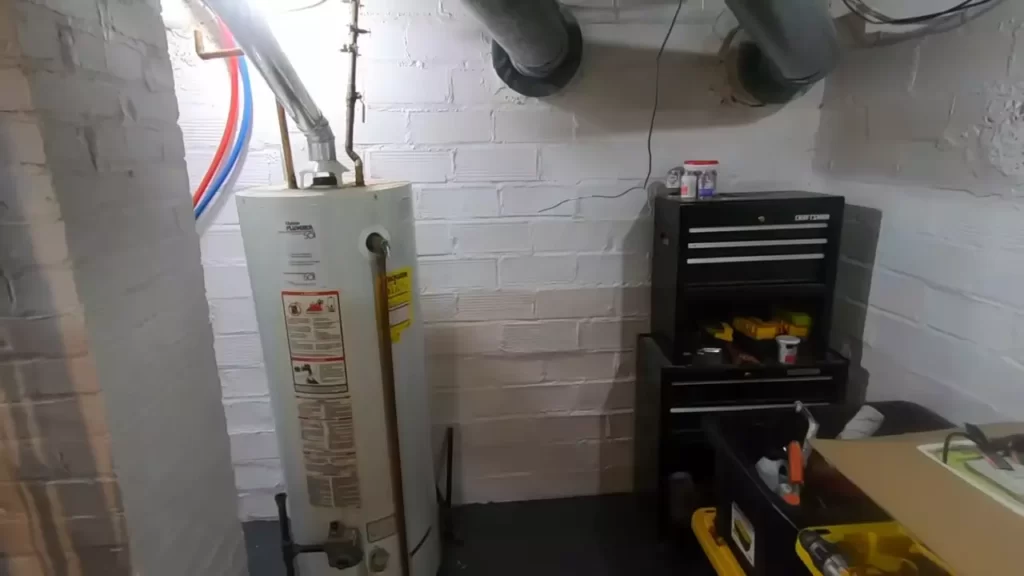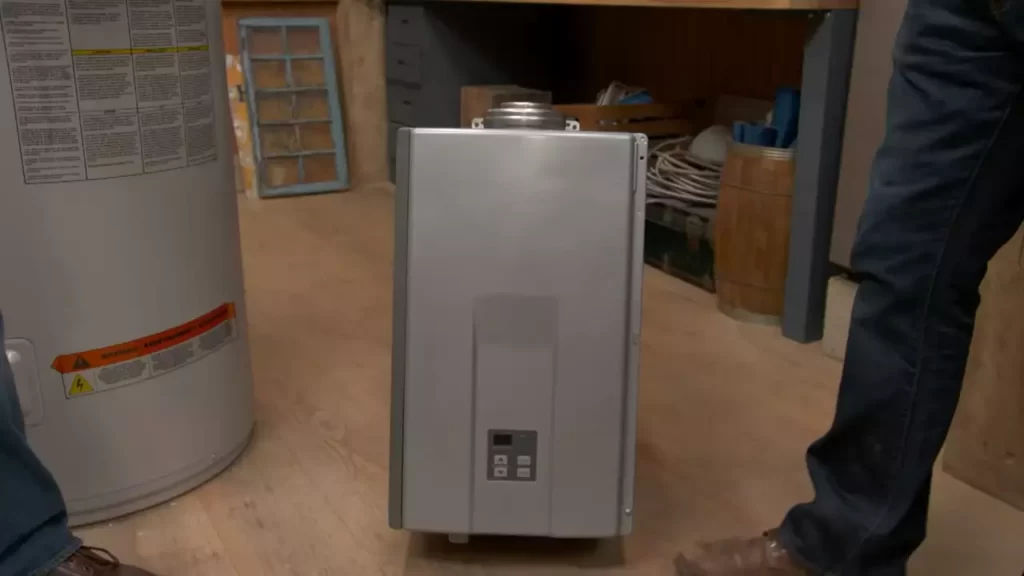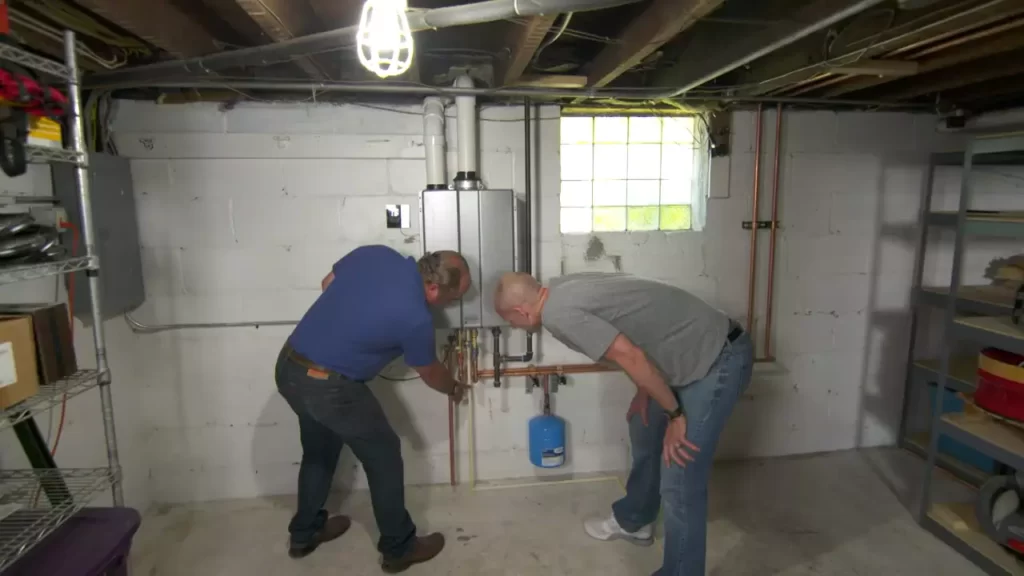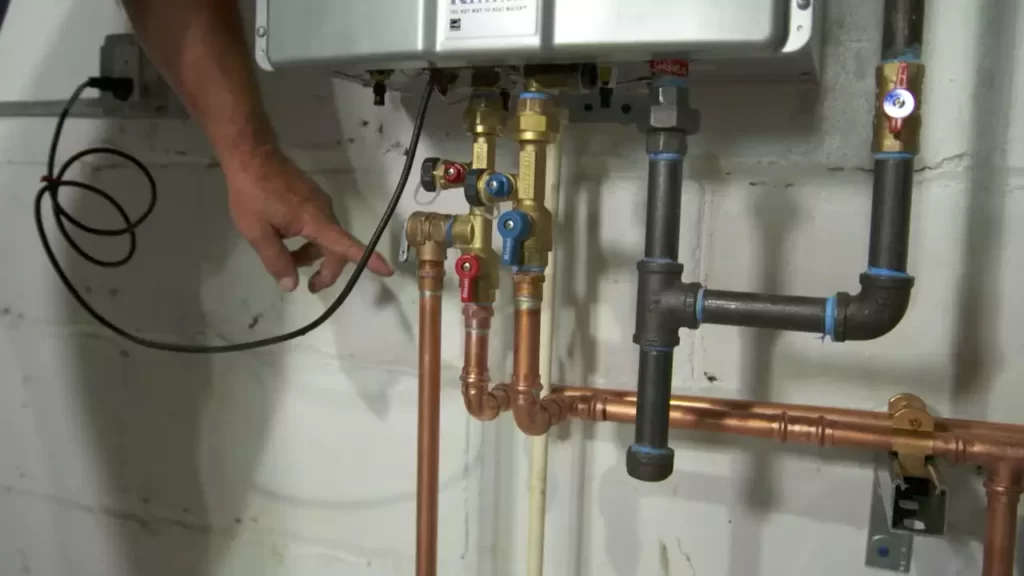To install a gas tankless water heater, follow the manufacturer’s instructions and ensure proper ventilation and plumbing connections. This article provides a step-by-step guide on installing a gas tankless water heater, ensuring efficient and safe functioning for your hot water needs.
We will cover everything from choosing the right location, preparing the area, connecting the water and gas lines, and testing the unit. A gas tankless water heater provides an energy-efficient and space-saving solution for your hot water requirements. By following the proper installation procedure, you can enjoy the benefits of endless hot water while reducing energy consumption.
Preparing For Installation
Before you can begin installing your gas tankless water heater, it’s important to properly prepare for the process. This involves several key steps, such as researching the right model, checking local building codes and regulations, and gathering the necessary tools and materials. Taking the time to complete these preparations will ensure a smooth and successful installation. Let’s take a closer look at each step:

Researching the Right Gas Tankless Water Heater Model
Start by researching and selecting the right gas tankless water heater model for your home. Consider factors such as the size of your household, the desired flow rate, and the available space for installation. Different models come with varying features and capacities, so it’s important to choose one that meets your specific needs. When researching, pay close attention to customer reviews, energy efficiency ratings, and warranty information to make an informed decision.
Checking Local Building Codes and Regulations
Before proceeding with installation, it’s crucial to ensure that you comply with all relevant local building codes and regulations. These codes are in place to guarantee the safety of your installation and to protect your property and that of your neighbors. Check with your local building department or consult a professional to understand the specific requirements for installing a gas tankless water heater in your area. This step will help prevent any legal or safety issues down the line.
Gathering the Necessary Tools and Materials
Once you’ve selected the right gas tankless water heater model and are familiar with the local codes, it’s time to gather the necessary tools and materials for the installation. Having everything ready beforehand will save you time and prevent unnecessary delays during the installation process. Here’s a list of the essential tools and materials you’ll need:
| Tools | Materials |
|---|---|
|
|
Make sure all tools are in good working condition and that you have the necessary safety equipment, such as gloves and goggles, to protect yourself during the installation. Additionally, it’s always a good idea to have some extra fittings and connectors on hand in case you encounter any unexpected surprises.
By thoroughly researching the right gas tankless water heater model, checking local building codes and regulations, and gathering the necessary tools and materials, you’ll be well-prepared for the installation process. This level of preparation ensures that your gas tankless water heater will be installed correctly and efficiently, providing you with reliable hot water for years to come.
Safety Measures
When it comes to installing a gas tankless water heater, ensuring safety measures are in place is of utmost importance. In this section, we will discuss the essential steps you need to take to ensure a safe installation process. From turning off the gas supply to properly ventilating your gas tankless water heater, these safety measures will help protect you and your home.

Turning off the gas supply
Before you begin installing your gas tankless water heater, it is crucial to turn off the gas supply. This step ensures that no gas leaks occur during the installation process, minimizing the risk of fire or explosion. To turn off the gas supply, follow the steps mentioned below:
- Locate the main gas shutoff valve, usually found near the gas meter or propane tank.
- Turn the valve handle perpendicular to the gas line, in a position where it is no longer parallel.
- Verify that the gas supply is turned off by checking the flow of gas to any appliances in your home.
By following these steps, you can be confident that the gas supply to your tankless water heater is securely turned off.
Shutting off the water supply
Another crucial safety measure is to shut off the water supply before installing your gas tankless water heater. This ensures that no water leaks or flooding occurs during the installation process, protecting your home from potential damage. To shut off the water supply, follow these steps:
- Locate the main water shutoff valve, usually found near the water meter or in the basement.
- Turn the valve handle clockwise until it is tightly closed.
- Open a faucet in your home to drain any remaining water in the pipes.
By following these steps, you can prevent any water-related accidents or damage during the installation of your gas tankless water heater.
Disabling the electrical power
In addition to turning off the gas and water supplies, it is essential to disable the electrical power before installing your gas tankless water heater. This step helps prevent electrical hazards and ensures a safe installation process. To disable the electrical power, follow these steps:
- Locate the main electrical panel in your home, usually found in the basement or utility room.
- Locate the circuit breaker that corresponds to the area where you will be installing the tankless water heater.
- Switch the circuit breaker to the “off” position, ensuring that no power is flowing to the area.
By disabling the electrical power, you minimize the risk of electrical accidents and create a safe environment for installing your gas tankless water heater.
Ventilation considerations for gas tankless water heaters
Adequate ventilation is crucial when installing a gas tankless water heater. Ventilation helps remove combustion byproducts, such as carbon monoxide, from your home, keeping the air clean and safe to breathe. When it comes to ventilation considerations, keep the following points in mind:
- Follow the manufacturer’s guidelines and requirements for proper ventilation.
- Ensure that the venting system is designed to handle the specific requirements of your gas tankless water heater.
- Install carbon monoxide detectors near the water heater and in other appropriate areas of your home.
Proper ventilation is essential for the safe and effective operation of your gas tankless water heater. By adhering to ventilation considerations, you can maintain a safe indoor environment.

Installation Process
When it comes to installing a gas tankless water heater, it’s essential to follow a step-by-step process to ensure a safe and effective setup. This article will guide you through each stage of the installation, from choosing the right location to testing for leaks and functionality. Let’s get started!
Choosing the right location for the water heater
The first step in installing a gas tankless water heater is to select an appropriate location. This requires careful consideration of various factors to ensure optimal performance and safety. Here are some key aspects to keep in mind:
- Choose a location near the gas and water supply lines to minimize the distance traveled by the connections.
- Ensure adequate space around the heater for ventilation and maintenance.
- Place the unit in an area away from combustible materials to prevent any fire hazards.
Mounting the unit securely
Once you’ve identified the ideal location, it’s time to securely mount the tankless water heater. Follow these steps to ensure a stable installation:
- Use sturdy brackets or straps to secure the unit to the wall.
- Ensure the mounting surface is strong enough to support the weight of the heater.
Connecting the gas supply line
With the unit properly mounted, the next step is to connect the gas supply line. Here’s how to do it:
- Turn off the gas supply to the house before beginning the installation.
- Apply thread sealant tape or pipe joint compound to the threads of the gas supply line.
- Attach the gas supply line to the heater’s gas inlet using a gas connector or a flexible gas line.
- Tighten the connections securely, but avoid overtightening.
Connecting the water supply lines
Now it’s time to connect the water supply lines to the tankless water heater. Follow these steps:
- Turn off the water supply to the house.
- Attach the hot and cold water supply lines to the appropriate inlets on the heater, ensuring proper alignment.
- Use adjustable wrenches to tighten the connections securely.
- Open the water supply valve to check for any leaks at the connections.
Installing the venting system
For effective operation, a tankless water heater requires a venting system to remove combustion gases from the unit. Here’s how to install it:
- Choose the appropriate venting material based on the heater’s requirements.
- Follow the manufacturer’s instructions to install the vent pipe, ensuring proper slope and avoiding any sagging or dips.
- Securely connect the vent pipe to the air intake and exhaust flue of the water heater.
Setting up the electrical connections
In addition to the gas and water connections, a gas tankless water heater requires electrical power to operate. Here are the necessary steps for setting up the electrical connections:
- Connect the heater to an appropriate electrical power source, following the manufacturer’s guidelines and local electrical codes.
- Ensure proper grounding for safety.
- Double-check all electrical connections to ensure they are secure.
Testing for leaks and proper functionality
After completing the installation, it’s crucial to test for leaks and ensure proper functionality before using the water heater. Follow these steps:
- Turn on the water supply and gas.
- Check all connections, joints, and valves for any signs of leaks.
- Activate the heater and verify that it operates smoothly, producing hot water as expected.
- If any issues are detected during the testing process, consult a professional to address and resolve them.
By following these steps, you can confidently install a gas tankless water heater and enjoy its benefits for years to come.

Tips And Best Practices
Installing a gas tankless water heater can be a cost-effective and energy-efficient solution for your home. To make sure your installation goes smoothly and ensures optimal performance, it’s important to follow these tips and best practices:
Properly sizing the gas tankless water heater for your needs
Choosing the right size gas tankless water heater is crucial for ensuring you have enough hot water for your household’s needs. Undersizing can result in inadequate hot water supply, while oversizing can lead to wasted energy. To properly size your tankless water heater, consider the following factors:
- The number of bathrooms and fixtures in your home
- The water temperature rise needed
- The maximum flow rate required
By accurately calculating these factors, you can determine the appropriate size of your gas tankless water heater, ensuring efficient hot water delivery.
Insulating hot water pipes for efficiency
Insulating your hot water pipes can significantly improve the energy efficiency of your gas tankless water heater. By reducing heat loss through the pipes, you can decrease the time it takes for hot water to reach the faucet, ultimately saving energy and reducing your utility bills. Here are some key points to remember:
- Choose the right insulation material: Opt for insulation with a high R-value for better thermal protection.
- Insulate both hot and cold water pipes: While hot water pipes are the primary focus, insulating cold water pipes can prevent condensation and further improve energy efficiency.
- Properly seal all joints: Make sure to seal all gaps and joints in the insulation to maximize its effectiveness.
- Pay attention to exposed pipes: Insulate pipes in unheated areas such as basements, crawlspaces, or attics to prevent freezing and optimize heat retention.
By insulating your hot water pipes, you can enjoy faster hot water delivery and reduced energy consumption.
Regular maintenance and cleaning
To keep your gas tankless water heater operating efficiently, regular maintenance and cleaning are essential. This will not only prolong its lifespan but also optimize its performance. Here are some key maintenance tasks:
- Flush the system: Flushing the system annually removes mineral deposits that can accumulate and affect performance.
- Check the pressure relief valve: Ensure the pressure relief valve is functioning correctly to prevent any potential hazards.
- Clean the air intake: Dust or debris can accumulate in the air intake, so clean it regularly to maintain proper combustion.
- Inspect the burner: Check the burner assembly for any obstructions or signs of damage that may affect efficiency.
By following these maintenance tasks, you can keep your gas tankless water heater in optimal condition, ensuring a continuous hot water supply.
Troubleshooting common installation issues
While installing a gas tankless water heater, you may encounter some common issues that can be easily resolved. Here are a few troubleshooting tips:
- No hot water: Check the gas supply, water flow, and make sure the heater is properly vented.
- Fluctuating water temperature: Adjust the temperature settings and ensure the unit is properly calibrated.
- Gas odors: If you detect the smell of gas, immediately turn off the heater and contact a professional for inspection.
- Error codes: Familiarize yourself with the error codes specific to your gas tankless water heater model and refer to the manufacturer’s manual for troubleshooting steps.
By being aware of these common installation issues and their solutions, you can effectively troubleshoot any problems that may arise, ensuring your gas tankless water heater operates smoothly.
With these tips and best practices, you can install and maintain your gas tankless water heater with confidence, enjoying the benefits of efficient and endless hot water in your home.
Frequently Asked Questions For How To Install A Gas Tankless Water Heater
Can I Install A Gas Tankless Water Heater Myself?
Yes, you can install a gas tankless water heater yourself. However, it’s recommended to consult a professional to ensure proper installation and safety measures are followed. Hiring a licensed plumber or gas fitter will help avoid potential issues and ensure the system operates efficiently.
What Is Needed For A Gas Tankless Water Heater?
A gas tankless water heater requires a gas supply, a vent pipe for fumes, and a water supply for operation. It heats water on demand, providing hot water instantly without the need for a storage tank.
Do Tankless Water Heaters Need Dedicated Gas Line?
Yes, tankless water heaters require a dedicated gas line for proper operation.
Can I Replace My Gas Water Heater With A Tankless Water Heater?
Yes, you can replace your gas water heater with a tankless water heater. It’s an energy-efficient option that heats water on demand without the need for a storage tank. This can save you money on utility bills and provide an endless supply of hot water.
Conclusion
To sum up, installing a gas tankless water heater can be a cost-effective and efficient choice for upgrading your home’s hot water system. By following the step-by-step instructions provided in this blog post, you can successfully complete the installation process.
Remember to consider safety precautions and consult with a professional if needed. With a gas tankless water heater, you can enjoy endless hot water and potentially lower energy bills. So, why wait? Start reaping the benefits today!
